Czechoslovak anti-aircraft missile forces during the Cold War
By the middle of the 1950-s, due to the increasing speed and altitude of jet warplanes, medium and large-caliber anti-aircraft artillery ceased to be an effective means of air defense. The problem was aggravated by the fact that the single atomic bomb carrier that broke through the air defense lines could cause critical damage to the defending side. Simultaneously with the creation of all-weather jet fighter interceptors with supersonic flight speed and equipped with airborne radar stations, automated guidance lines and guided missiles, work began on developing mobile anti-aircraft missile systems in our country.
The first mobile air defense system, which entered service with the USSR Air Defense Forces in 1958, was the Dvina CA-75. For the defeat of air targets, radio command B-750 anti-aircraft missiles (1D) were used. The engine Zour worked on kerosene, the oxidant was nitrogen tetroxide. The launch of the rocket from an inclined launcher with a variable starting angle and an electric drive for turning in angle and azimuth took place with the aid of a detachable solid-fuel first stage. A guidance station operating in the 10-cm range was able to track one target and direct up to three missiles at it. In total, the anti-missile battalion had 6 launchers that were located up to 75 meters from the guidance station. Due to the fact that the ZRK used its own radar means for detecting airborne targets: P-12 radar and PRV-10 radar altimeter - the anti-aircraft missile division was able to conduct combat operations autonomously.
Shortly after the 10-cm modification was put into service, a complex of 6-cm range received the designation C-75 “Desna”. The transition to a higher frequency allowed to reduce the dimensions of the antennas of the guidance station and in the future made it possible to improve the precision of the missile guidance and noise immunity. The C-75 Desna missile guidance station used a selection system for moving targets, which made it easier to aim at targets flying at low altitudes and under the conditions of the enemy’s passive jamming. In the 1960-ies, the upgraded CA-75М and С-75 SAMs were produced in parallel. But after adopting a complex with a guidance station that operated in the 6-cm frequency range, the SA-75М was built only for export. These complexes differed equipment SNR-75, equipment of state identification and the type of missiles used. As part of the C-75 and C-75М SAMs, the B-750BH / B-755 SAMs were used, and the BNXNXB were supplied for export to the end of the 1960's.
C-75 air defense system in Czechoslovakia
In June, 1962, the formation of the first czechoslovak air defense units equipped with anti-aircraft missile systems - the 185th Prikarpatye anti-aircraft missile brigade with headquarters in the village of Dobrzhany. It was assumed that the SA-75M missile positions would cover Prague from the south-west from air attack facilities based in Germany. In the summer of 1963, the 71st anti-aircraft missile brigade was deployed halfway between the Czech-German border and Prague halfway between the Czech-German border and Prague. Thus, anti-aircraft missile systems appeared on the arsenal of the Czechoslovak army only five years after they began to enter the USSR Air Defense Forces. American intelligence quickly revealed the deployment of air defense systems in Czechoslovakia. By that time, American reconnaissance aircraft already had a sad experience communicating with anti-aircraft missiles of the Dvina anti-aircraft complex, and pilots aviation NATO was ordered not to fly deep into Czechoslovakia.
According to archival data, 16 SA-75М Dvina, 5 technical positions and 689 B-750В missiles were supplied to Czechoslovakia. In the period from 1969 to 1975, the CA-75М SAM systems available in Czechoslovakia underwent modernization of the 1, 2 and 3 stages. B-750B missiles were serviced in 1972 and 1975. To this end, with the support of the USSR, a repair company was built in the city of Prostev in the east of the Czech Republic, where maintenance of the missile defense system for the C-75М / М3 and С-125М / М1А was also carried out. SA-75М in Czechoslovakia were in service until the 1990 year. After the development of the Czechoslovak calculations of the C-75М3 air defense system, the CA-75М complexes did not carry a permanent combat duty, they were used as duplicates, and were partly sent to storage bases.
In 1964, Czechoslovakia’s air defense forces received the first three divisional sets of the Volkhov C-75M air defense system. All in all, up to 1976, the Czechoslovakia delivered 13 SAMs and 617 B-755 missiles. Compared to the C-75M in C-75M complexes, the maximum range of aerial targets was increased from 34 to 43 km, the accuracy of missile guidance, the probability of damage and noise immunity were improved. Shortly before the end of serial construction in the USSR of the C-75 family, in the period from 1983 to 1985, the 5 C-75М3 Volkhov and BNXX 406 X-NUMX air defense missiles with a 759 km range were transferred to the year.
The commissioning of the С-75М3 SAMs made it possible to abandon the outdated CA-75М, which, in working condition, required considerable effort. Along with the delivery of the C-75М3 air defense system with the help of Soviet specialists, the C-75М air defense system received earlier was being repaired and upgraded. Between 1970 and 1984, the C-75Ms were upgraded in the 1, 2, 3 and 4 phases. After the modernization, it was possible to increase the noise immunity, and long-range missiles were included in the ammunition. The western direction from the border with Germany in the middle of the 1980-x defended five anti-aircraft missile divisions equipped with upgraded C-75 from the 186 anti-aircraft missile brigade with headquarters in Pilsen, which was part of the 3 th air defense division. In total, in Czechoslovakia, by the end of 1980, combat duty was carried by 18 of the C-75М / М3 anti-aircraft missile battalions. 8 SA-75M was also in a “hot” reserve.
Model complex for the equipment of false positions
Speaking about the service of the C-75 air defense system in Czechoslovakia, it is worth mentioning the original development of Czechoslovak engineers - pre-fabricated models and special simulators, which were supposed to serve as false targets for enemy aircraft. The creation of false positions of the C-75 ADMS was initiated by the leadership of the Czechoslovak army after understanding the results of the Arab-Israeli "Six-Day War" 1967 of the year. Cheap, easily collapsible copies of the CA-75М and С-75М components were made on the scale of 1: 1 from non-deficient materials. Large-scale models placed on false positions, when observed from the air, were supposed not only to create the visual illusion of this complex, but also to simulate the launch of a rocket using pyrotechnic devices. In addition, Tesla specialists have created generators that reproduce the operation of detection radars and guidance stations.

The set consisted of six models of anti-aircraft missiles on launchers, three models of cabs, three models of transport-charging machines for the PR-11A machine, P-12 and CHP-75 radar simulators, two diesel generator sets and camouflage nets, which "Make up" layouts. The 4 Tatra 141 truck, the 6 Praga V3S truck and a truck mounted crane were required to transport the mock-up complex. Serving a false position was performed by a team of 25 people. Layout installation time depends on local conditions - 120-180 minutes.
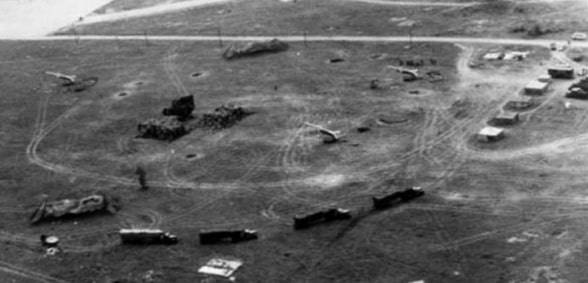
Troop tests of the false position of the C-75 ADMS were carried out in 1969, in the vicinity of the Zatec airfield. In 1970, the mock-up complex was shown to the command of the ATS countries, after which he earned high marks. The need for Czechoslovak air defense troops in C-75 air defense missile systems was estimated at 20 units. Production layouts began in 1972 year. Apparently, the mock-up complex created in Czechoslovakia became the first production model in the ATS countries specifically designed to equip the false position of the C-75 ADMS and to simulate the combat operation modes of radio components.
The S-125М / М1А air defense system in Czechoslovakia
With a good range and the possibility of hitting high-altitude targets, the C-75 air defense system had a number of significant drawbacks. During the preparation of missiles for combat use required refueling with liquid fuel and caustic easily evaporated oxidizer. After finding a certain time in the refilled state, the fuel and oxidizer had to be drained, and the rocket was sent for preventive maintenance to the technical division. When transporting the fueled missiles, they required a very careful attitude, since even a small leak of oxidizer that ignited combustible substances could cause a fire and an explosion. In addition, even the latest modified missiles were not able to hit air targets flying below 300-100 meters.
At the beginning of the 1960-ies, in connection with the advent of interceptors equipped with radar and guided missiles, and anti-aircraft missile systems capable of successfully fighting supersonic high-altitude targets, there was a tendency of the transition of combat aircraft to operations at low altitudes. In this regard, in the USSR, an emergency development of low-altitude air defense systems began. Compared to the purely stationary C-25 and the very limited C-75 mobility, the combat means of which were often deployed in capital concreted positions, when creating C-125 SAMs with radio-command solid-propellant missiles, great attention was paid to increasing fire performance and mobility. In forming the technical appearance of the new Soviet low-altitude complex, the accumulated experience of creating and operating the previously created anti-aircraft systems was used, and also changes in the tactics of the use of combat aircraft were taken into account.
Thanks to the introduction of a number of previously unused technical solutions, the designers managed to reduce the lower boundary of the affected area in the first version of the complex to 200 meters, later on the upgraded C-125М1 (С-125М1А) Neva-М1 with anti-aircraft guided missiles 5В27DH the figure . The C-25 was the first anti-aircraft defense system of the country with solid-fuel anti-aircraft missiles. The use of solid fuel in engines Zour has a number of significant advantages over anti-aircraft missiles, fueled with liquid fuel and oxidant. It is known that the first Soviet air defense systems С-125 and С-25 with liquid-fuel rockets were very expensive to operate. Refueling of the ZUR with a toxic fuel and caustic oxidizing agent was associated with a considerable risk and required the use of personal protective equipment for the skin and respiratory organs.
Formally, the C-125 air defense system was adopted by the USSR Air Defense Forces in 1961, but its mass deliveries to the troops began three years later. The C-125 air defense system consisted of: a missile guidance station (SNR-125), transported launchers, transport-loading vehicles with anti-aircraft missiles, an interface cab, and diesel generator sets. For independent action, the division was given radars of P-12 (P-18) and P-15 (P-19).
In the first versions of the C-125, launchers for two missiles were used. For the upgraded C-125М1А air defense system, a portable four-beam 5P73 (CM-106) PU was adopted, which increased the number of ready-to-use missiles in the air defense system twice. In order to increase combat effectiveness and improve service and operational properties, the complex has been repeatedly upgraded. At the same time, noise immunity was improved and the launch range increased. In the C-125М1 СРК (С-125М1А) “Neva-М1” the possibility of tracking and firing of visually observed aerial targets with the use of Carat-2 television-optical sighting equipment was introduced. This allowed launching under the conditions of powerful radio-electronic interference, and improved the survival rate of the complex.
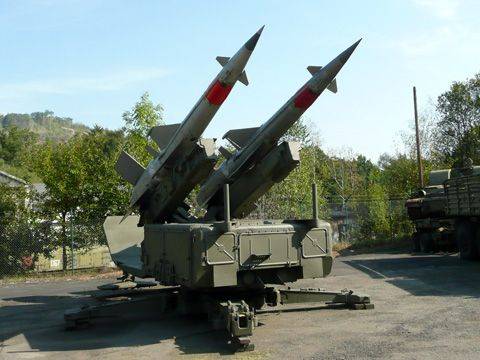
The first C-125M “Neva” air defense systems entered Czechoslovakia in 1973 year. According to archival data, only up to the middle of 1980-X was received 18 СРК С-125М / С-125М1А and 812 ЗUR В-601ПД. Like the medium-range air defense systems C-75М / М3, low-altitude С-125М / М1А during the cold war years formed the basis of the Czechoslovak anti-aircraft missile forces. To increase the combat capabilities of the C-125М air defense missile systems, from 1974 to 1983, the 1, 2 and 3 stages were upgraded. For the preparation of the calculations of the C-75 and C-125 ADMS in the conditions of enemy counteraction (maneuver and electronic suppression) in Czechoslovakia there were 11 simulators "Accord-75 / 125".
The C-200VE air defense system in the Czechoslovak air defense system
The long-range air defense system C-200 "Angara", adopted by the USSR Air Defense Forces in the 1967 year, became the "long arm" that allowed the scouting and strategic bombers to destroy high-altitude aircraft at a distance of up to 180 km. Unlike the C-75 and C-125 complexes, in which guidance commands were issued by the CHP-75 and CHP-125 missile guidance stations, the radar for target illumination was used as part of the C-200 missile system. The ROC could have captured the target and switched to its auto tracking of the semi-active self-guided self-guided missiles at a distance of more than 300 km. The most massive modification was the Vega C-200BM air defense missile system, with a unified B-880 240 km missile range and a 0,3-40 km attack height. As in the СР-75 family of air defense missile systems, the C-200 complexes of all modifications used liquid-propelled missile systems. The engine worked on a caustic oxidizer AK-27 - based on nitrogen oxides and fuel - TG-02. Both components were a threat to human health and required the use of personal protective equipment. For acceleration of the rocket to the march speed served four solid-fuel accelerator.
The C-200 complex included a target illumination radar, a command post, diesel generators. On the prepared starting position with roads for the supply of missiles and loading launchers "guns" were located platforms six launchers. They were served by twelve charging machines, launch preparation booths. The combination of the command post and two or three ROCs was called the fire divisions group.
Although the C-200 SAM system was considered portable, changing its firing positions for it was very difficult and time consuming. The relocation of the complex required several dozen trailers, tractors and heavy trucks with off-road capability. C-200, as a rule, were placed on a long-term basis, in engineering-equipped positions. Concrete structures with earthen bulk shelter were built to accommodate part of the radio-electronic battery combat equipment at the prepared stationary position of fire divisions to protect the equipment and personnel.
Despite the high cost of the elements of the complex, the complex and very expensive maintenance of the missiles, the need for equipment engineering positions — the C-200 air defense system was highly valued for its ability to hit targets hundreds of kilometers away from the launch position and good noise immunity. Russian open sources state that in 1985, 3 C-200VE, one technical position and 36 B-880E missiles were delivered to Czechoslovakia. However, judging by satellite images, the air defense forces of Czechoslovakia received 5 air defense missile systems (target channels).
According to Czech sources and declassified data of the American intelligence, long-range air defense systems С-200ВЭ were armed with 9 and 10-rd air defense missiles, which were part of the 76-th air defense XRBR division. Complexes with heavy anti-aircraft missiles weighing about 2 tons were deployed in the vicinity of the village of Raportitsa, 8 km west of Brno. In addition to the engineered starting and technical positions, a military camp was built here with barracks, apartment buildings for officers, and numerous technical hangars. At the moment, this infrastructure is still used by the Czech military. Although the C-30VE air defense system was decommissioned long ago, equipped anti-aircraft positions were used to deploy mobile Cube air defense systems, and command centers were located in bunkers.
Three more C-200VE air defense systems were deployed in the vicinity of the village of Dobris, in 20 km south-west of Prague. The complexes were operated by the 17,18,19-th center of the 71-th anti-aircraft missile brigade from the 3-th division of the air defense. Unlike the position in Raportitsa, the military left the area and the expensive fortified positions, bunkers, and also the residential town are currently in disrepair. After the transfer of the military camp to the civil administration, in 2010, solar panels were placed on the territory of the former military unit.
ZRS-300PMU in the Czechoslovak air defense system
At the end of 1980's, the Soviet military leadership planned to bring the air defense systems of the countries participating in the ATS to a qualitatively new level. To this end, along with the 4 generation fighters, the nearest Eastern European allies of the USSR began deliveries of the S-XNUMPPMU anti-aircraft missile system with a range of high-altitude targets to 300 km. Reach height - 75 km.
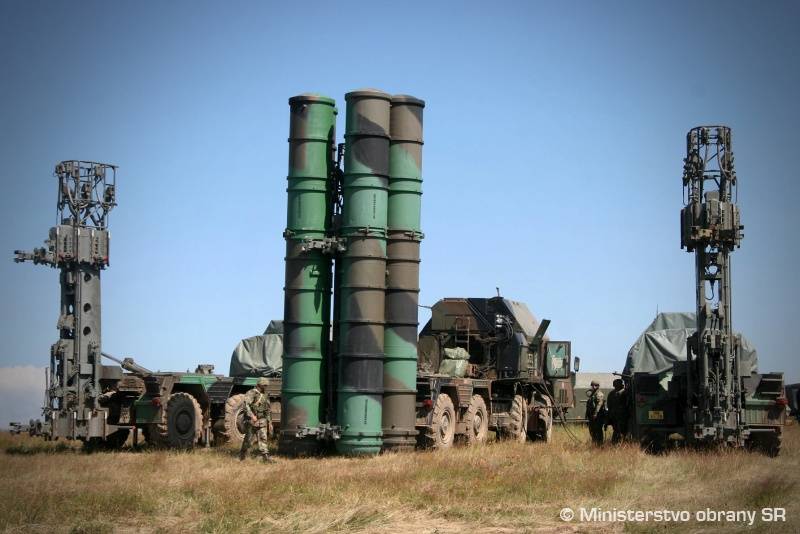
According to the Soviet air defense development plan in the member states of the Warsaw Pact, the S-300PMU air defense missile systems were supposed to replace the outdated and exhausted SA-75M and C-75M air defense systems. Before the disintegration of the Eastern Bloc, C-XNUMPPMU managed to get Czechoslovakia and Bulgaria. The scheduled delivery of the C-300PMU in the GDR was canceled at the last moment. One C-XNUMPPMU anti-aircraft missile division in 300 was located in the vicinity of the Lizek village in 300 km west of Prague, where it remained until the middle of 1990.
Automated control systems of air defense of Czechoslovakia
In 1968, the automated control system ASURK-75МE arrived to control the actions of the Czechoslovak anti-aircraft missile brigades that were armed with the SA-75М and С-1М systems. The ASURK-1МE system was made in a transportable version and included in its structure the equipment of the command post and the means of interfacing and communication with anti-aircraft missile divisions. It provided automated 8 C-75 SAMs.
A few years after the development of ASURK-1ME, the air defense forces of Czechoslovakia received the ASU "Vector-2VE". This automated control system was designed for the automated issuance of target designation and management of the combat work of low-altitude C-125 air defense systems. Teams from the automated control system Vektor-2VE were transmitted directly to the anti-aircraft missile guidance station. At the same time, the distance to take a target for tracking reached 50 km.
It was not possible to establish in which year the air defense forces of Czechoslovakia began operating the Almaz-2 automated control complex. Apparently, the delivery of the equipment used at the central command post of the country was linked to the receipt by Czechoslovakia of MiG-21МФ fighters, as well as C-75М and С-125М air defense systems. The Almaz-2 complex provided for the automated exchange of information through closed telegraph, telephone and radio channels of the central command post with the command post of the brigade and regimental level. This provided reception, processing, storage and display on the means of collective and individual use of information on 80 targets, including cruise missiles in flight. Information about readiness, capabilities, current hostilities and the outcome of combat operations of subordinate air defense troops was displayed on the scoreboard. Subordinate KPs received data on nuclear strikes, chemical, radiation, and meteorological conditions. For processing and storage of operational information a computer complex was used, consisting of two computers of the 5363-1 type, with memory on ferrite cores. 1980 automated control complex "Almaz-4" was also supplied to Czechoslovakia in 3-ies. The new complex differed from Almaz-2 using high-speed processors with new storage devices, color information display monitors and a greater degree of automation of operator workplaces. "Almaz-3" could be used both independently and as part of several complexes united by a computer network. Thanks to the introduction of the Almaz-3 automated systems, the Czechoslovak Social Security System gained greater combat stability. Automated complexes were installed not only in the central command post of the air defense, located in a large underground bunker near the town of Stara Boleslav, but also at the command posts of the 2 and 3 divisions of the air defense built in the vicinity of Brno and Zatec. Almaz-3 was also installed at the 71 underground command post of the anti-aircraft missile brigade in Drnov. This command post, built in accordance with the achievements of the fortification and equipped with fully modern 1980-s for the beginning of communication and automation, could, if necessary, take over the functions of the central control unit of the Czechoslovak air defense system. The total area of the object was 5500 m².
The command post functioned from 1985 to 2003 year. At present, in the bunker of the 71-th zrbr, from where during the Cold War years the actions of the battalions defending Prague were managed, there is a museum of Czechoslovak air forces known as the “Bunker Drnov”. The equipment and interiors are largely preserved at the command post, and samples of equipment and weapons are presented in the courtyard.
At the end of 1984, the command post of the 3 Air Defense Division in Vetrushitsy received the Senezh-E automated control system, which allows them to autonomously control combat operations of the anti-aircraft missile brigade, to distribute targets between individual divisions, taking into account their characteristics and capabilities of the air defense system. Compared with previous models of ACS, thanks to the use of new high-speed electronic components, it was possible to significantly increase the speed of processing and bringing information to the consumer, increase the time between failures and power consumption. Also at the brigade and regimental level, the opportunity to interact with fighter aircraft. The system, using the Azure equipment (Lazur-M), provided simultaneous guidance of the 6 MiG-21МФ and MiG-23МФ fighters. The components of the system were placed in typical towed and self-propelled hardware on the cargo chassis. After putting the Senezh-E system into operation, it united under its control 8 srdn С-75М / М3 and 8 сrdn С-125М / М1А. Later, three C-200BE divisions deployed in the Dobris area were connected to the system. At the end of 1980-x in Czechoslovakia delivered a modernized ACS "Senezh-ME", which could interact with the command-guidance equipment of the MiG-23ML, MiG-29А fighters and the C-300MPM command center.
The complex of automation equipment of the command post of the radio base battalion "Basis-1E" in real time provided reception, processing, display and documentation of information about the air situation from subordinate radar posts. As well as managing the actions of subordinate radar stations, determining the nationality and types of air targets, issuing information to command posts of radio-technical and anti-aircraft missile units, fighter aviation units and electronic warfare. To automate the process of combat work, the management of staff radar companies and issuing data to higher-level and secured command posts in Czechoslovakia was used by the Field-E control system. The radar "Defense-1", П-14М and СТ-37У were used as a source of radar information in the air defense of Czechoslovakia for Basis-68E. At the subordinate level, interaction with the Field-E automated control system was carried out. At the higher - with the ACS "Senezh-E" and "Senezh-ME".
Evaluation of the combat potential of the Czechoslovak air defense system
By the end of the 1980-x, the Czechoslovak air defense system was equipped with fully modern airborne monitoring stations, automated combat control and data transmission systems, supersonic interceptor fighters and anti-aircraft missile systems capable of destroying air targets in the entire altitude range. In the ranks, there were more than 80 circular radars, providing multiple overlap of the radar field. As of 1989 year, approximately 40 СРК-125М / М1А, С-75М / М3 and С-200ВЭ were deployed at stationary positions in Czechoslovakia. For a medium-sized European country, this is a very substantial amount. Although the long-range C-200VE air defense missile systems not only controlled most of Czechoslovakia and the adjacent areas of neighboring states, the figure below shows that the Czechoslovak air defense system had a distinct focal character. The main positions of the air defense system were located along the western border and around the cities: Prague, Brno, Ostrava and Bratislava. But even in this case, the Czechoslovak air defense system could inflict very serious losses on the combat aircraft of the NATO countries. Unlike the USSR Air Defense Forces, all Czechoslovak positions were covered by towed and self-propelled 30-mm anti-aircraft guns, which increased their combat stability from air attack weapons breaking through at low altitude.
The defeat zones of the Czechoslovak air defense missile systems C-125М / М1А, С-75М / М3 and С-200ВЭ as of 1989 year. Violet circles - affected areas of the C-200VE air defense system, red - C-75М / М3 air defense system, turquoise - С-125М / М1А
According to the well-known western expert in the field of air defense, Shona O'Connor, significant gaps in the defeat zones of the C-125М / М1А and С-75М / М3 air defense systems in the central and western parts of Czechoslovakia made it possible for breakthrough combat aircraft from the south-east of Germany and Austria. For the sake of justice, it should be said that in the “threatened period”, medium-range troop mobile units “Krug” and “Kvadrat” could be deployed in the open areas. The command of the Czechoslovak Air Defense Command also had: three squadrons of MiG-21МФ fighters, three squadrons of MiG-23МФ, one MiG-23МЛ and three MiG-XNUMHA.
Despite significant investments, the Soviet leadership failed to create an insurmountable barrier in Eastern Europe for NATO air attack weapons and to implement an ambitious plan to integrate the national air defense systems of the ATS countries under a single operational command from Moscow. To this end, the airfields of the Eastern European allies of the USSR planned to deploy additional communication channels, automated control systems and a half to two dozen ARLO-50 airplanes - which could carry out round-the-clock patrols one by one. Also, the program of replacing the early modifications of the C-75 air defense system to the multi-channel C-300P air defense missile systems with solid-fuel anti-aircraft missiles remained unrealized.
To be continued ...
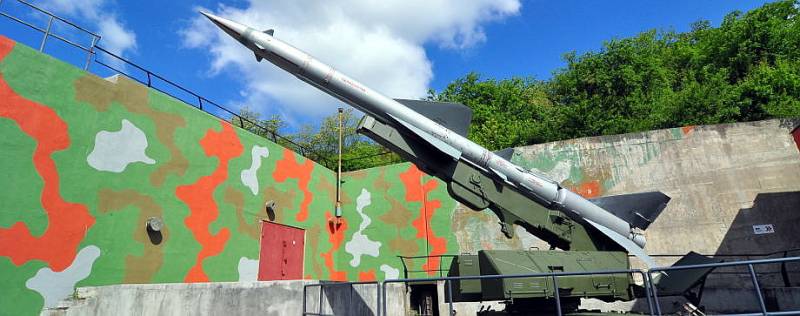
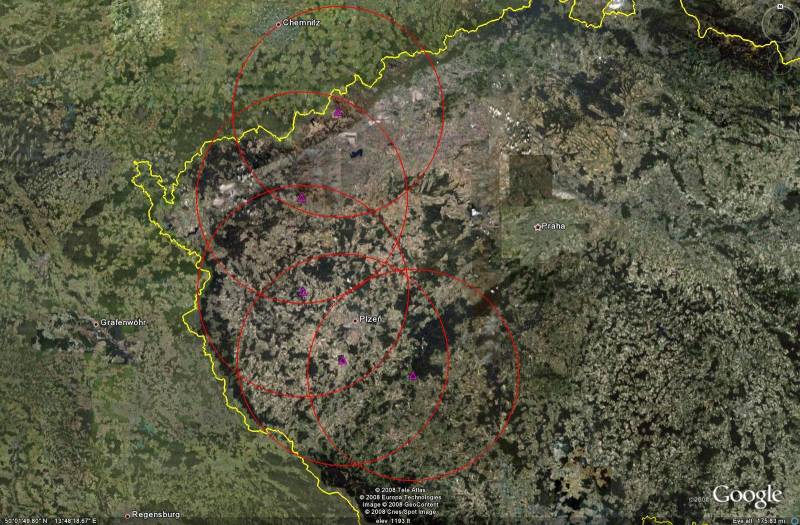
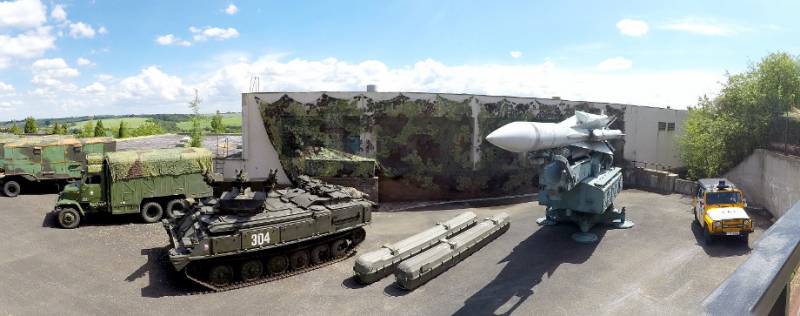
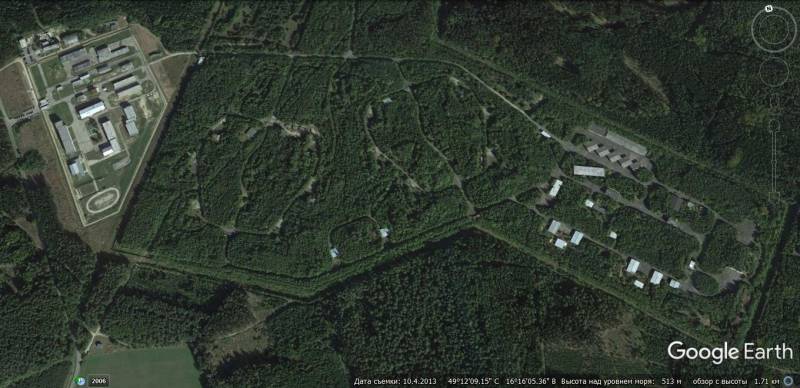
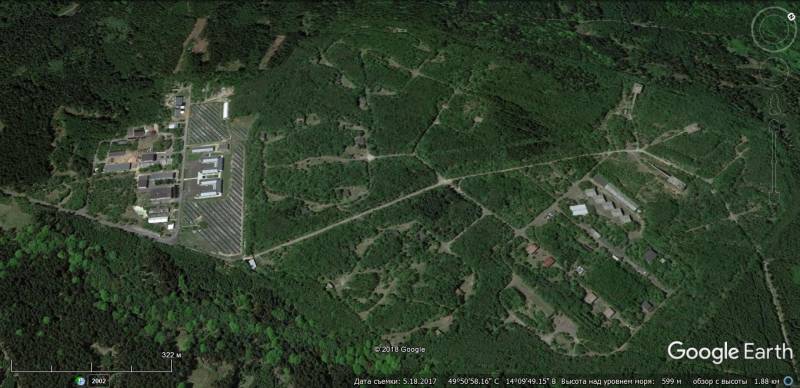
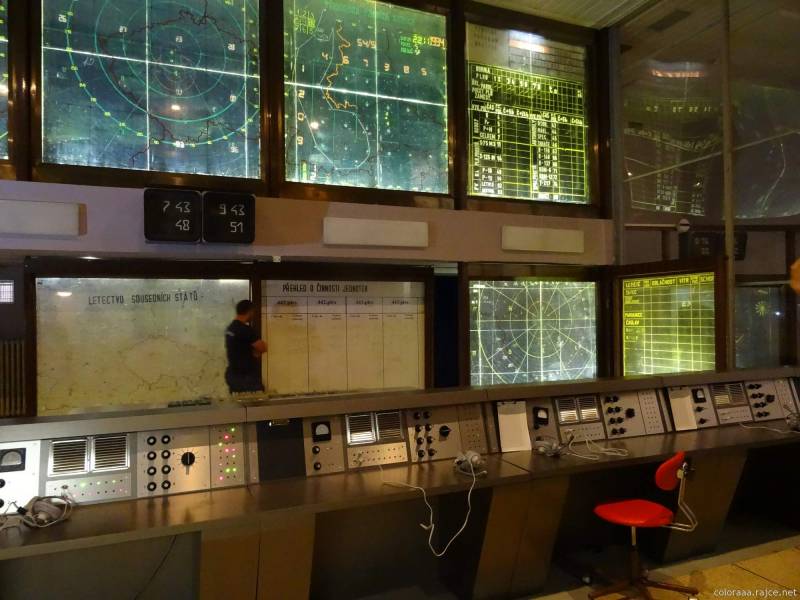
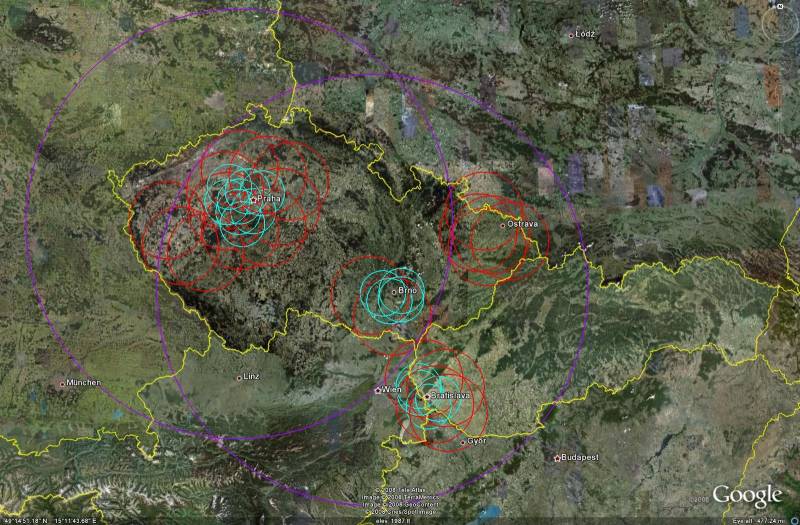
Information